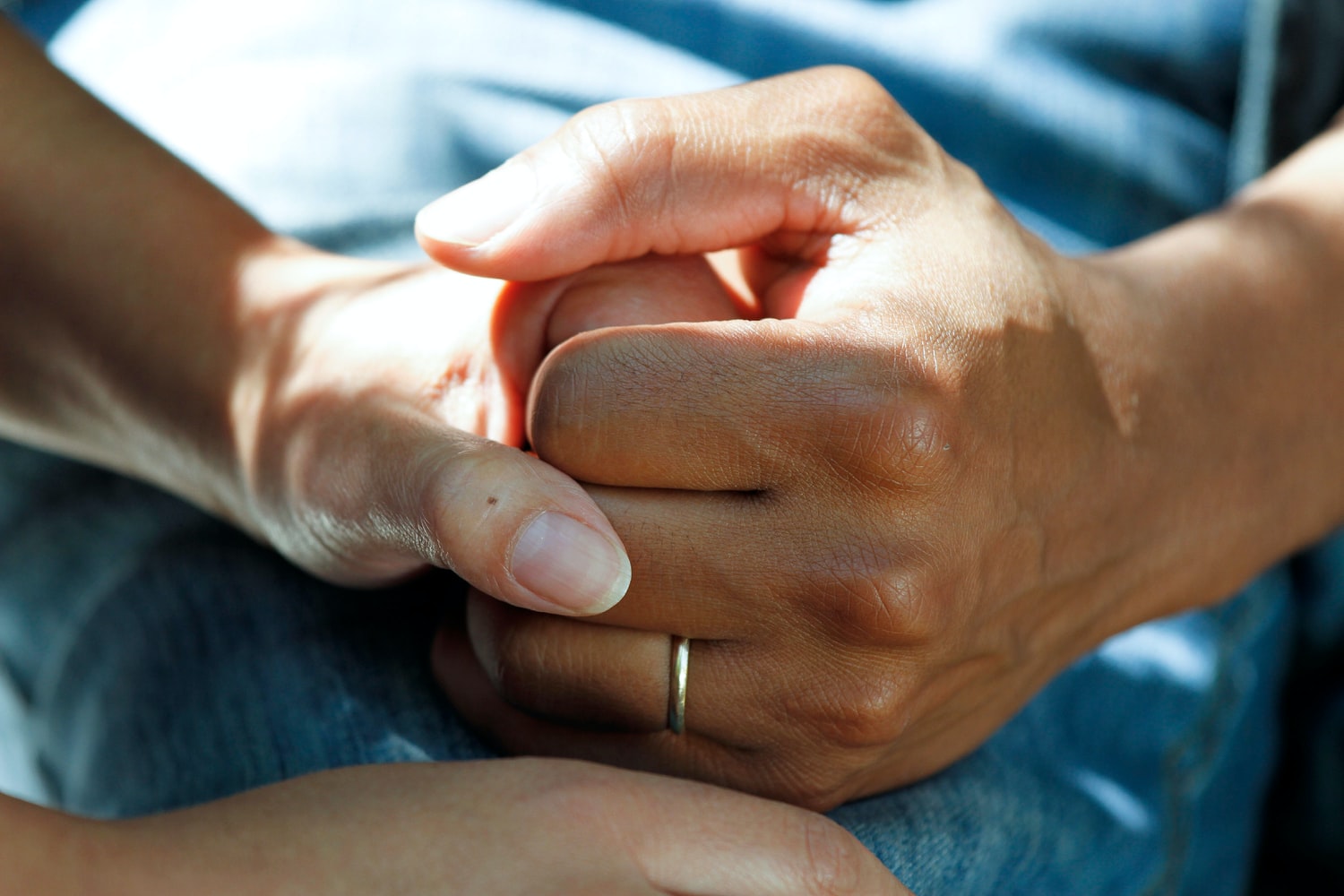Oncology Physical Therapy

Cancer has touched every family in the US at some point. Standing beside a loved one or being the patient facing this intimidating path can be daunting. Oncology physical therapy helps cancer patients and their families navigate the challenges associated with their cancer battle.
Our team’s oncology physical therapists are trained and educated to understand how cancer affects the human body and how to increase quality of life through treatment. Our team works with you to develop specialized treatment programs that address your specific needs and goals.
Use the form below to learn more about oncology physical therapy.
The Role of the Physical Therapist in Cancer Care
Worldwide cancer rates are set to double by 2020, a report published by the World Health Organization says. Currently 10 million new cancers are diagnosed each year worldwide, but unless there is an effective prevention campaign, the number will rise to 20 million in 17 years’ time, the report states.
According to the American Cancer Society more than 1.8 million new cancer cases are expected to be diagnosed in 2020 in the US. (This estimate does not include carcinoma in situ noninvasive cancer of any site except urinary bladder; nor does it include basal cell or squamous cell skin cancers because these types of skin cancer are not required to be reported to the cancer registries).
Idaho’s estimated cancer rates for 2020 is 8,540 people will be diagnosed. Kootenai County is the 3rd largest county in the state. In 2013-2017 Kootenai County reported, for every 100,000 people, 534 would require invasive cancer surgery in our region. That would mean with our current population of 161,000 approximately 860 people will need care. (Our county has grown 16% since 2010, and there are 44 counties in our state, with a population 1.78 million).
The side effects of cancer care due to direct tumor involvement, diagnostic procedures, therapeutic procedures, the side effects and/or toxicities of radiation, chemotherapy and the resulting de-conditioning that occurs is significant.
Side effects of cancer treatment often include:
- Pain with loss of quality of life
- Numbness in feet and hands
- Swelling of lymph nodes (lymphedema)
- Swelling of arms, legs, torso, or face
- Muscle weakness
- Joint stiffness
- Fatigue
- Loss of endurance
- Loss of bone density (strength)
- Difficulty walking
- Loss of balance
- Weight gain or decreased appetite
- Brain fog
- Heart problems
- Reduced social activity
- Reduced physical activity
- Sleep interference
- Isolation and suffering
How Does Oncology Physical Therapy Help Manage Pain
Pain is a major contributor as 30-50% of all cancer patients will have some associated pain during the course of their disease. Seventy five to 90% of these people will have life-altering cancer induced pain that affects their quality of life.
Early detection has improved survival so longevity has increased, however quality of life is sacrificed if pain is a major contributor. Pain is known to decrease quality of life, especially uncontrolled pain.
Prevention is the key and Physical Therapists who are specialized in this type of care can
provide the much needed intervention to improve patients quality of life. Physical Therapy Rehabilitation is known to be an effective intervention and addresses all avenues of their physical abilities.
Often the pain cancer patients experience can be mitigated with early intervention from Physical Therapists who specialize in cancer care as well.
Pain generally arises from 3 predominate systems, the visceral, neurological and somatic systems.
- Arthropathies, musculoskeletal and soft tissue pain can develop due to postural changes and a loss of mobility and strength Often pain in the somatic system is localized, sharp and superficial.
- Visceral pain can occur due to damage or blockage from the internal organs systems and is often deep and diffuse in nature.
- Peripheral neuropathies due to tumor erosion, chemotherapy or radiation therapy.
- Skin changes due to radiation fibrosis post-surgical incisional issues.
The American Cancer Society recommends people undergoing cancer treatment, and cancer survivors, perform consistent physical exercise to decrease fatigue, and improve the ability to perform normal daily activities. Studies show that exercise can improve an individual’s chances of surviving cancer. Physical therapists can design individualized exercise and treatment programs to reduce or prevent many cancer-related problems.
Oncology Physical Therapy’s Role in Surgery
Physical therapists help people diagnosed with cancer before and after surgery. Before surgery, they evaluate individuals for any of the problems listed above, and help address them. After surgery, they can help with the healing of the incision site, improve circulation, reduce pain, and minimize scarring. They evaluate individuals for any physical therapy treatment needs, and, by designing individualized treatment programs, help them recover and heal faster than they would on their own.
Oncology Conditions Physical Therapy Can Help
Your physical therapist may work with you to improve your:
Comfort and well-being. Cancer and cancer treatments can cause symptoms such as pain, burning sensations, numbness, tingling (neuropathy), cramps, spasms, and weakness. Your physical therapist may apply hands-on techniques (manual therapy) or technologies like electrical stimulation to help decrease your pain and alleviate your symptoms. The physical therapist may teach you gentle exercises or techniques to perform at home to aid your recovery. All of these options may reduce or eliminate the need for opioid pain medication.
Aerobic capacity. Cancer or cancer treatment may have decreased your ability to process oxygen (aerobic capacity), causing fatigue. Research shows that aerobic exercise, such as walking on a treadmill for at least 20 minutes 3 times per week, may help improve aerobic capacity, reduce fatigue, and optimize healing. Your physical therapist can assess your aerobic capacity and determine the best aerobic activities for you.
Bone density. Lack of activity and certain cancer treatments can cause weakening of your bones, which could lead to bone fractures. Certain types of exercise can prevent bone loss and maintain bone strength. Your physical therapist can teach you safe and effective exercises to help steadily build your bone strength.
Lymphedema and swelling. Certain cancer treatments can result in lymphedema (swelling in the arms or legs) or other types of swelling. Your physical therapist can use several methods to reduce, control, and prevent lymphedema and swelling, such as specialized gentle massage, special movements and exercises, and application of compressive garments such as arm sleeves, gloves, and leg stockings.
Surgical incisions. Your physical therapist can help you care for any surgical incisions and sutured areas, by checking for infection and assisting with dressing changes. The physical therapist also can help prevent some kinds of scarring and skin tightness as the suture line heals. Your physical therapist can use very gentle massage or certain technologies to keep the skin as soft and pliable as possible.
Body weight. By creating an exercise and physical activity program tailored just for you, your physical therapist will help you reduce body fat and maintain a healthy body weight, which can improve your energy levels.
Mood. Exercise helps elevate mood and reduce depression in everyone, including cancer patients and survivors. A diagnosis of cancer, and cancer treatment, can be stressful and cause mood changes in anyone. Proper exercise, individualized for each person by a physical therapist, can help reduce stress and improve mood.
Brain fog. Exercise helps relieve brain fog. Your physical therapist can design an individualized program of exercise that can help reduce memory loss and brain fog.
Daily activities. Your physical therapist will discuss activity goals with you and use them to design your treatment program. Cancer survivors usually increase their physical activity gradually; your treatment program will help you reach your goals in the safest, fastest, and most effective way possible.
Walking. Your physical therapist will help improve your ability to walk using techniques such as strengthening exercises, walking training, and balance activities. If you have nerve damage (neuropathy), your physical therapist may provide bracing and other techniques to make it easier or safer for you to walk. Your physical therapist also may recommend using an assistive device, such as a walker or cane.
Sports training ability. Athletes undergoing cancer treatment can continue to train for their sport to a degree, depending on the type of cancer and treatment. Physical therapists design safe, challenging, sport-specific training programs to help athletes reduce loss of fitness and strength during cancer treatment.
Motion. Your physical therapist will choose specific activities and treatments to help restore normal movement in any stiff joints. These might begin with “passive” motions that the physical therapist performs for you, and progress to active exercises and stretches that you do yourself. You can perform these motions at home to help hasten healing and pain relief.
Flexibility. Your physical therapist will determine if any muscles are tight, start helping you to stretch them, and teach you how to stretch them at home.
Strength. If your physical therapist finds any weak or injured muscles, the physical therapist will choose, and teach you, the correct exercises to steadily restore your strength and agility.
Coordination. Your physical therapist will help you improve and regain your coordination and agility, so you can perform household, community, and sports activities with greater ease.
Balance. Your physical therapist will examine your balance, and choose specific exercises that you can perform in the clinic and at home to improve your balance and prevent falls. Your physical therapist may also teach you how to use a cane or walker to help maintain your balance when walking and standing.
Home program. Your physical therapist will teach you strengthening, stretching, and pain reduction exercises to perform at home. These exercises will be designed specifically for your needs.
Physical Therapists are taking an active role in Oncology Care to improve people’s overall quality of life.
Use the form below to learn more about oncology physical therapy.
Is exercise good for cancer patients?
During chemotherapy and radiation, most patients have fatigue. In research studies, regular exercise has been linked to reduced fatigue. It’s also linked to being able to do normal daily activities without major problems. An aerobic exercise program can be prescribed as treatment for fatigue in cancer patients.
Combining aerobic exercise with walking and resistance training (such as weight lifting or using resistance bands) led to greater health benefits than aerobic activity alone. … Walking can improve the health of cancer patients.
…
 Sheree DiBiase, PT, ICLM is the owner of Lake City Physical Therapy, PA and she has been doing cancer care for over 24 years in our community. She has her “International Certification in Lymphedema Management“ through a program endorsed by Stanford University’s Dr Rockson, a leading Lymph Specialist. She is passionate about cancer care as her father passed away from an oral squamous cell carcinoma 3 years ago and her father-in-law suffers from a rare skin cancer that has gone systemic, but he is still alive at 88 years old due to an oral biologic targeted chemotherapy and immunotherapy medications and physical therapy quality of life interventions.
Sheree DiBiase, PT, ICLM is the owner of Lake City Physical Therapy, PA and she has been doing cancer care for over 24 years in our community. She has her “International Certification in Lymphedema Management“ through a program endorsed by Stanford University’s Dr Rockson, a leading Lymph Specialist. She is passionate about cancer care as her father passed away from an oral squamous cell carcinoma 3 years ago and her father-in-law suffers from a rare skin cancer that has gone systemic, but he is still alive at 88 years old due to an oral biologic targeted chemotherapy and immunotherapy medications and physical therapy quality of life interventions.

